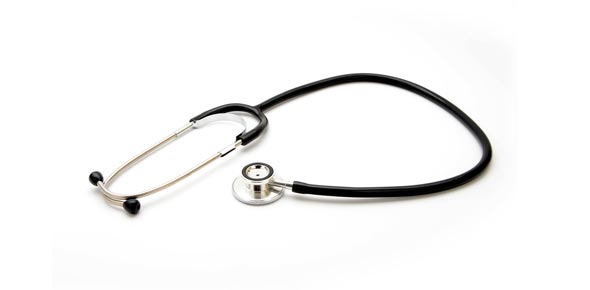Medical Chemistry: Class Test 2

Electrolytes, Calculations of pH, Buffers, Intermolecular forces, Tensides INCLUDING EXPLANATIONS FOR ANSWERS Please note these questions are not past papers, they have been put together by students using the course syllabus. They should be used for self-testing and as an exam preperation tool.
- 1.
What is the pH of a solution with [H+] = 1 x 10-6 M.
Correct Answer
6
6.00Explanation
pH is calculated by the formula
pH = - log [H+]
Substitute [H+] with the concentration in the question.
pH = - log (1 x 10-6)
pH = -(-6)
pH = 6Rate this question:
- 2.
What is the pH of a 0.025 M solution of Hydrobromic Acid?
Correct Answer
1.602
1.6Explanation
Hydrobromic Acid or HBr, is a strong acid and will dissociate completely in water to H+ and Br-. For every mole of HBr, there will be 1 mole of H+, so the concentration of H+ will be the same as the concentration of HBr. Therefore, [H+] = 0.025 M.
pH is calculated by the formula
pH = - log [H+]
Enter the concentration found before
pH = - log (0.025)
pH = -(-1.602)
pH = 1.602Rate this question:
- 3.
What is the pH of a 0.05 M solution of Potassium Hydroxide?
Correct Answer
12.7Explanation
Potassium Hydroxide or KOH, is a strong base and will dissociate completely in water to K+ and OH-. For every mole of KOH, there will be 1 mole of OH-, so the concentration of OH- will be the same as the concentration of KOH. Therefore, [OH-] = 0.05 M.
Since the concentration of OH- is known, the pOH value is more useful. pOH is calculated by the formula
pOH = - log [OH-]
Enter the concentration found before
pOH = - log (0.05)
pOH = -(-1.3)
pOH = 1.3
The value for pH is needed and the relationship between pH and pOH is given by
pH + pOH = 14
pH = 14 - pOH
pH = 14 - 1.3
pH = 12.7Rate this question:
- 4.
How many electrons does phosphorus have to gain in order to achieve a noble-gas electron configuration?
- A.
2
- B.
3
- C.
5
- D.
4
Correct Answer
B. 3Explanation
b – It has five valence electrons, and wants eight like argon.Rate this question:
-
- 5.
What is the effect of a surfactant on surface tension?
- A.
It increases it
- B.
It decreases it
Correct Answer
B. It decreases it -
- 6.
Why is hydrogen bonding only possible with hydrogen?
- A.
Hydrogen is the least electronegative element known.
- B.
The size of a hydrogen atom is similar to that of oxygen, nitrogen, and fluorine.
- C.
Hydrogen is the only atom with an unshielded nucleus when it forms covalent bonds.
- D.
More than one of the above.
Correct Answer
C. Hydrogen is the only atom with an unshielded nucleus when it forms covalent bonds. -
- 7.
Which of the following is least strong?
- A.
Polar covalent bond
- B.
Ionic bond
- C.
Hydrogen bond
- D.
Dipole-dipole force
Correct Answer
D. Dipole-dipole force -
- 8.
A buffer is 0.36 M in HNO2 and 0.21 M in NaNO2. If the ionization constant of HNO2 is 4.5 x 10^ -4, calculate the pH of the buffer.
Correct Answer
3.11Explanation
The Henderson-Hasselbalch equation is
pH = pKa + log([A-]/[HA]) and pKa = -logKa
In your case, [A-] = nitrite concentration from NaNO2
[HA] = HNO2
pH = -log(4.5E-4) + log(.21/.36)
pH = 3.11Rate this question:
Quiz Review Timeline +
Our quizzes are rigorously reviewed, monitored and continuously updated by our expert board to maintain accuracy, relevance, and timeliness.
-
Current Version
-
Mar 21, 2022Quiz Edited by
ProProfs Editorial Team -
Oct 18, 2011Quiz Created by
Bosscz
- Abdomen Quizzes
- Addiction Quizzes
- Aging Quizzes
- Arthritis Quizzes
- Beauty Quizzes
- Blood Quizzes
- Body Quizzes
- Bone Quizzes
- Brain Quizzes
- Child Health Quizzes
- Dermatology Quizzes
- Digestive System Quizzes
- Disease Quizzes
- Fertility Quizzes
- First Aid Quizzes
- Hair care Quizzes
- Health And Nutrition Quizzes
- Health And Wellness Quizzes
- Health Policy Quizzes
- Health Psychology Quizzes
- Health Worldwide Quizzes
- Hearing Quizzes
- Heart Quizzes
- Illness Quizzes
- Injury Quizzes
- Kidney Quizzes
- Liver Quizzes
- Lung Quizzes
- Mental Health Quizzes
- Nose Quizzes
- Nutrition Quizzes
- Obesity Quizzes
- Ophthalmology Quizzes
- Patient Quizzes
- Patient care Quizzes
- Pharmacy Quizzes
- Pregnancy Quizzes
- Puberty Quizzes
- Public Health Quizzes
- Respiratory System Quizzes
- Sleep Quizzes
- Stress Quizzes
- Surgery Quizzes
- Surgical Instruments Quizzes
- Throat Quizzes
- Weight Quizzes
- Wellness Quizzes
 Back to top
Back to top


